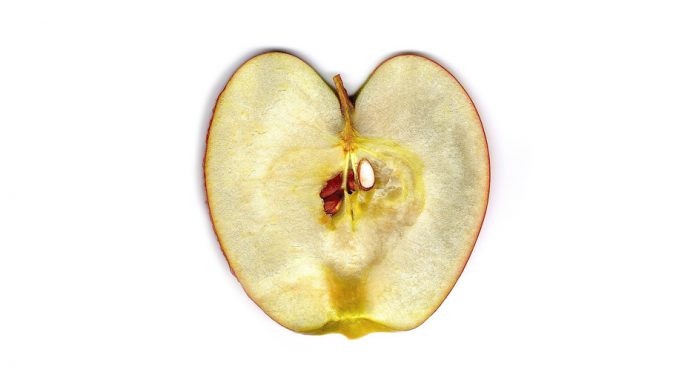The need for organ transplants far exceeds the number donated, and each year hundreds of Canadians die waiting for a transplant. One of the main goals of regenerative medicine is to repair or replace damaged organs.
For tissue engineers, culturing a layer of cells on a hard plastic dish isn’t enough to build functional three-dimensional organs in the lab. There are several commercially available biomaterials, such as collagen, that can be used to make 3D scaffolds to grow cells in a defined volume, but their cost can put this potentially life-saving technology out of reach for many patients.
Prof. Andrew Pelling, associate professor of physics and biology at the University of Ottawa, is working on an offbeat solution. His lab is using the decellularized apple flesh as a scaffold to grow mouse and human cells. He calls it an open source biomaterial, and it is just one of many possible solutions from the plant world.
The apple can be sliced or carved into any desired shape, and once the cells are removed, a porous cellulose is left behind, providing a framework for cells to grow in.
Some days you walk into the lab to discover it’s turned into a factory for apple ears. pic.twitter.com/XVYMoVHolm
— Pelling Lab (@pellinglab) January 13, 2016
These are “living” ears made by biohacker and #TEDFellow Andrew Pelling from apples and humans cells. pic.twitter.com/5xH61CNPw4 — TED Fellows (@TEDFellow) January 19, 2016
This achievement is particularly interesting because cellulose is a plant material; human cells don’t grow on it in nature. One of the key focuses in the Pelling lab is to understand and push the limits of biology by growing cells on materials that don’t pair in nature. Although they seem to grow more slowly, they do eventually reach high densities, and are able to fully penetrate the scaffold.
Pelling has also made his methods open source, providing an instruction set, complete with several ideas for inexpensive DIY equipment. Apples, water, and dish detergent are all that is needed to make your own apple scaffolds at home.
His innovative approach to tissue engineering has earned him a space alongside 20 other international change-makers as a 2016 TED fellow, and he will speak at the TED conference in Vancouver in February.





































